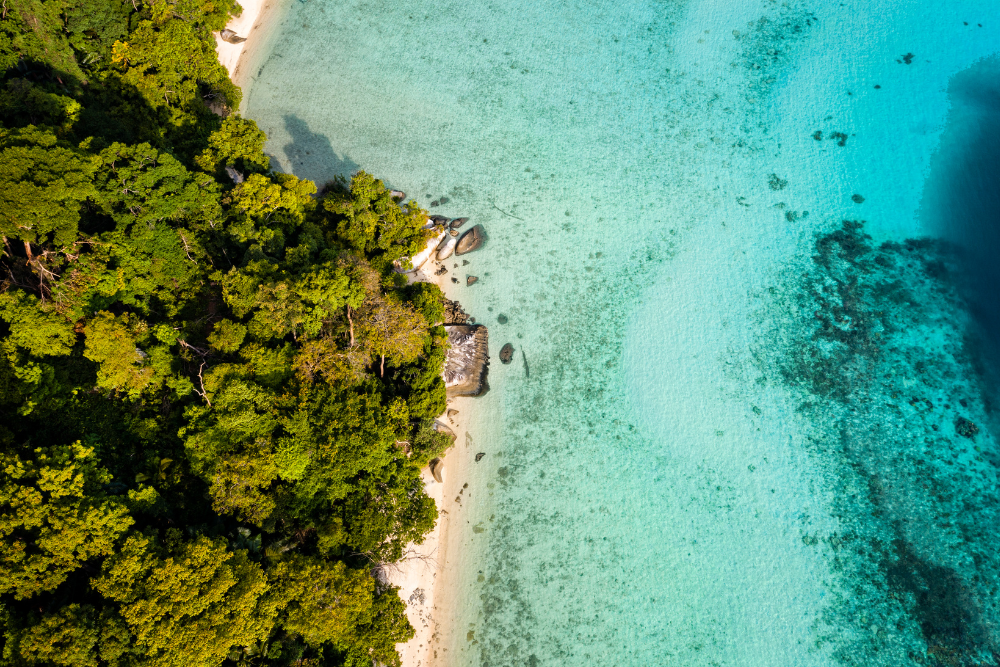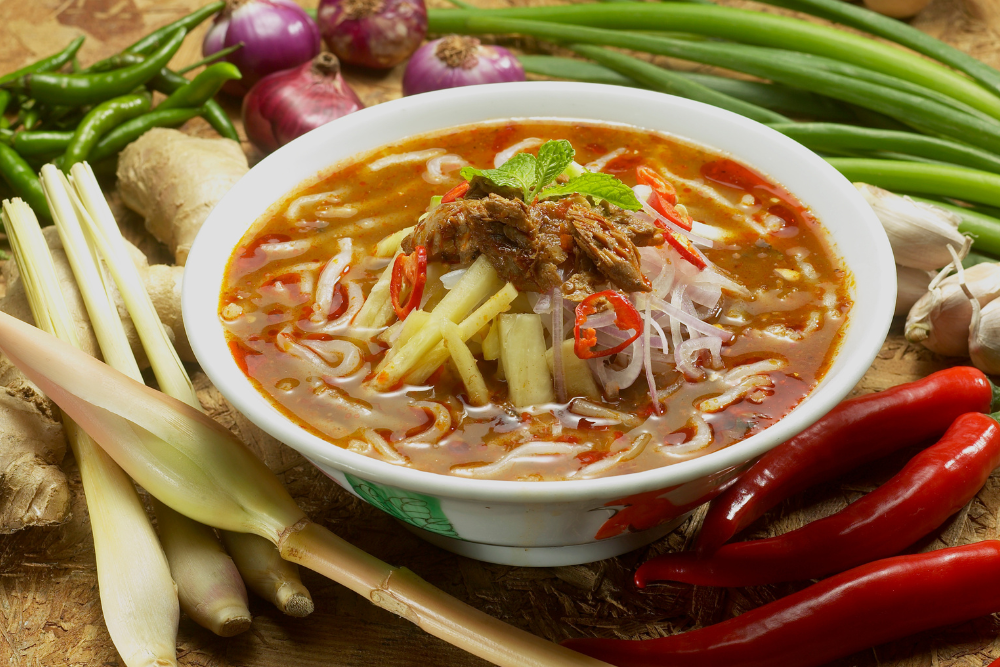When most travelers think of the monsoon season, images of heavy rains, floods, and unpredictable weather might come to mind. However, in a country as diverse and dynamic as Malaysia, the monsoon season offers a unique travel experience that can be as enjoyable as visiting during the drier months. From fewer crowds to lush landscapes, here are several reasons why you should consider visiting Malaysia during the monsoon season.
1. Fewer Tourists, More Peace
One of the biggest advantages of traveling to Malaysia during the monsoon season is the reduced number of tourists. Many people avoid traveling during this period because of the weather, which means you can explore some of the country’s top attractions without the usual crowds. Whether you’re visiting iconic landmarks, exploring bustling cities like Kuala Lumpur, or enjoying peaceful beaches, the monsoon season provides a more relaxed and tranquil experience.
This quieter atmosphere allows you to immerse yourself in the local culture without the distractions of large tourist groups. For travelers seeking solitude or a more intimate experience, the off-peak months are perfect for exploring at your own pace.
2. Lush Greenery and Stunning Landscapes
Malaysia’s tropical climate means that the monsoon season brings an explosion of greenery, transforming the landscape into a lush paradise. The rain nourishes the forests, making national parks, rainforests, and gardens even more vibrant and beautiful. If you’re an avid nature lover or photographer, the monsoon season is an ideal time to visit the country’s numerous natural wonders.
Rainforests like those in Taman Negara or Endau Rompin National Park become even more enchanting during this time, with waterfalls flowing in full force and the overall landscape looking incredibly lush. You’ll have the opportunity to witness the beauty of Malaysia’s flora and fauna in their most vivid form, with the rain enhancing the atmosphere and giving you a chance to enjoy nature’s refreshing rejuvenation.
3. Lower Prices and Better Deals
With fewer tourists visiting during the monsoon season, many hotels, resorts, and tour operators offer discounts and special deals to attract visitors. Flights tend to be cheaper, and accommodation rates are lower, which makes it a more budget-friendly time to travel. This is an excellent opportunity for travelers who want to experience Malaysia’s luxury accommodations without paying the premium rates that come with peak season.
Whether you’re looking to stay at a high-end beach resort, glamp in the rainforest, or enjoy a boutique hotel experience, you can often find great deals during this period. This makes the monsoon season an attractive option for travelers on a budget who want to stretch their dollars further.
4. A Quieter Beach Experience
Although the west coast of Malaysia experiences drier weather during the monsoon season, the east coast sees more rain, particularly in places like the Perhentian Islands, Redang Island, and Tioman Island. While these areas are typically popular with tourists during the dry months, the monsoon season offers a much more peaceful and serene beach experience.
If you don’t mind the occasional downpour, you can enjoy the beauty of these islands with fewer crowds, allowing you to relax on pristine beaches and indulge in activities like snorkeling, diving, and beachcombing in a more tranquil setting. The rain often comes in short bursts, leaving plenty of time to enjoy the outdoors in between showers. Plus, the rainfall cools the air and provides a welcome respite from the heat.
5. Cultural Events and Festivals
While Malaysia is known for its festivals and cultural events throughout the year, the monsoon season is also a time when some of the country’s most colorful and vibrant festivals take place. For example, the Thaipusam festival, celebrated by the Indian community, usually falls in January or February. During this time, Kuala Lumpur, especially the Batu Caves, comes alive with religious ceremonies, processions, and a deep sense of spirituality.
Additionally, Hari Raya Puasa (the celebration of Eid al-Fitr) is another festival that is celebrated during the monsoon months, depending on when the Islamic lunar calendar dictates the end of Ramadan. This festival offers travelers a chance to experience Malaysia’s rich cultural diversity through street markets, delicious food, and vibrant celebrations.
Visiting during the monsoon allows you to witness Malaysia’s deep-rooted traditions and immerse yourself in local customs without the overwhelming crowds that typically accompany peak season festivities.
6. Cooler Temperatures and Refreshing Showers
The monsoon season in Malaysia brings cooler temperatures, especially in the evenings. While the rain can be heavy, it often cools down the hot and humid tropical climate, providing a refreshing break from the intense heat of the dry season. Cities like Kuala Lumpur and Penang become much more comfortable to explore, with temperatures ranging between 24°C (75°F) and 29°C (84°F) compared to the scorching heat of the dry months.
In addition, the rain brings a pleasant atmosphere, especially when you’re exploring nature trails or enjoying a leisurely walk through Malaysia’s historical streets and vibrant neighborhoods. The sound of the rain tapping on rooftops, the lush vegetation, and the cooler environment make for an incredibly calming and enjoyable experience.
7. Unique Wildlife Spotting Opportunities
During the monsoon season, Malaysia’s wildlife is in full bloom, and there’s no better time to spot creatures that thrive in the lush environment. The rainforests and national parks are home to a variety of wildlife that come out after the rain, making for unique animal sightings. From colorful birds like hornbills and kingfishers to the elusive orangutans in Borneo, the wet season provides opportunities to see animals in their natural habitats as they become more active after the rainfall.
If you’re lucky, you may also encounter rare creatures like Malayan tigers, elephants, or clouded leopards, which thrive in the dense jungles of Malaysia. The monsoon season’s increased vegetation makes it easier for wildlife to blend in, so visitors need to stay alert while trekking through the jungles and national parks.
8. Experience the Local Life
Visiting Malaysia during the monsoon season offers a chance to witness how locals adapt to the rains. From raincoats to umbrellas, the daily life of Malaysians during this time is fascinating to observe. You can experience local street markets, where vendors often cover their stalls to protect their goods from the rain but continue to sell their items.
Furthermore, monsoon season brings out some of Malaysia’s best comfort food, such as warm bowls of laksa, nasi lemak, and roti canai, all of which are perfect to enjoy while sheltered from the rain. Visiting during this time lets you engage more authentically with local life, as you’ll see how communities come together to weather the storms and continue their day-to-day activities.
Conclusion
While the monsoon season in Malaysia may seem intimidating at first glance, it offers an incredibly rewarding experience for those who choose to visit. From fewer crowds and lower prices to lush landscapes, unique cultural festivals, and cool temperatures, there are many reasons why traveling during the rainy months can be just as enjoyable, if not more so, than visiting during the peak season.
If you’re looking to escape the crowds, immerse yourself in nature, and experience Malaysia in a unique light, the monsoon season may just be the best time to go. Embrace the rain, and you’ll find that Malaysia’s beauty and charm are just as captivating, no matter the weather.












